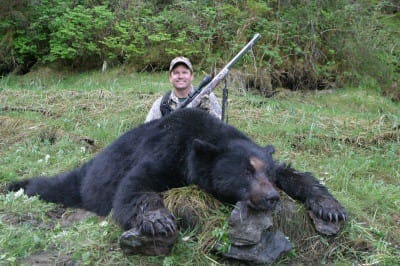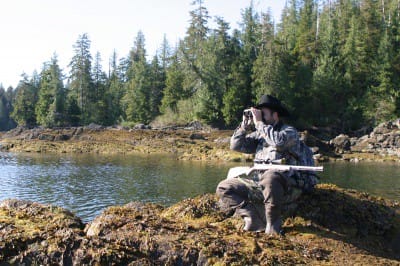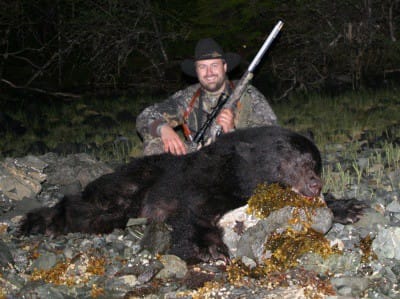
Black bears populate areas spanning from as far south as Florida and northern Mexico to as far north as Alaska. With food supplies and genetics varying geographically there are better places then others to take big bears or color phase bears. If you are looking for really big bears the eastern U.S. or western Canadian coasts and Alaska are the places to start looking. If you are looking for color phased black bears start looking in Montana or Idaho.
One of my favorite tactics for hunting black bears is the spot-and-stalk method. Not all regions are conducive for this type of hunting but in western North America this is a proven method for taking big bruins. The following are proven methods to be successful on spot and stalk bear hunts.
Five tips for spot-and-stalk bears.
1. Play the wind. Bears have an incredible sense of smell. If you don’t have the wind in your favor don’t try to get close to a bear, your wasting your time.
2. Watch your movement. Bears do not have the best eyesight but they pick up movement very well. Only move when a bear has his head down feeding or is looking the other direction.
3. Bears have very good hearing. If he is feeding on something or chewing you can get away with a little noise. Watch for barnacles and seashells and they can make it very difficult to get into range of a black bear.
4. Judge a bear. One of the toughest big game animals to judge in America is black bears. Look for a bear with broad shoulders and a large head. If the bear looks long and lanky it is probably a young bear. Look for a bear that looks like his stomach is close to the ground, but when using this method don’t overlook length. Some 2-year-old bears that have a lot of weight on them look bigger then they really are. Observe where the ears are on their head. If the ears look long and floppy or are more on the top of their head then slightly off to the side of their head, it is more than likely a small bear.
5. When stalking black bears always be on the lookout for old trees that have blown down or large rocks for a natural rest. I prefer carrying a good set of shooting sticks in case there is not a natural rest available. When hunting with a muzzleloader you need to make your shot count.
Where to go
Prince of Wales Island, Alaska. The island is approximately a 2600-square-mile area—about the size of Delaware—with around 990 miles of coastline. The island has the excellent habitat and is loaded with black bears. There are several ways to hunt this island: fully guided, do it yourself, or use a transporter and a boat for a base camp so you can move from place to place.
Vancouver Island, British Columbia. Biologists say that there are 12,000 black bears on Vancouver Island with the majority residing on the north end of the island. In 20 plus years of bear hunting this is the best bear area I have ever hunted, spotting over 20 bears a day.
Montana. The highest populations of bears are in Central to western Montana. Look west of the continental divide for good public land hunting opportunities. Montana does require that you take a bear identification test prior to purchasing a bear hunting license and your license must be purchased prior to the season opening.

Who to go with
Alaskan Yacht Adventures is owned and operated by Dennis and Mary Kay Thomas. They do not guide you for black bears but they will pick you up in Ketchikan and take you to all of the hot spots around Prince of Wales Island. They provide you with skiffs and three incredible meals a day. Their boat has four state rooms and is first class accommodations. www.alaskayachtcharters.com
Pacific Rim Guide Outfitters is owned by Jim Shockey and offers some of the best Vancouver Island bear hunts around for big bruins. www.jimshockey.com/Bear/
Montana boasts good numbers of black bears and has really good public access. www.fwp.mt.gov




